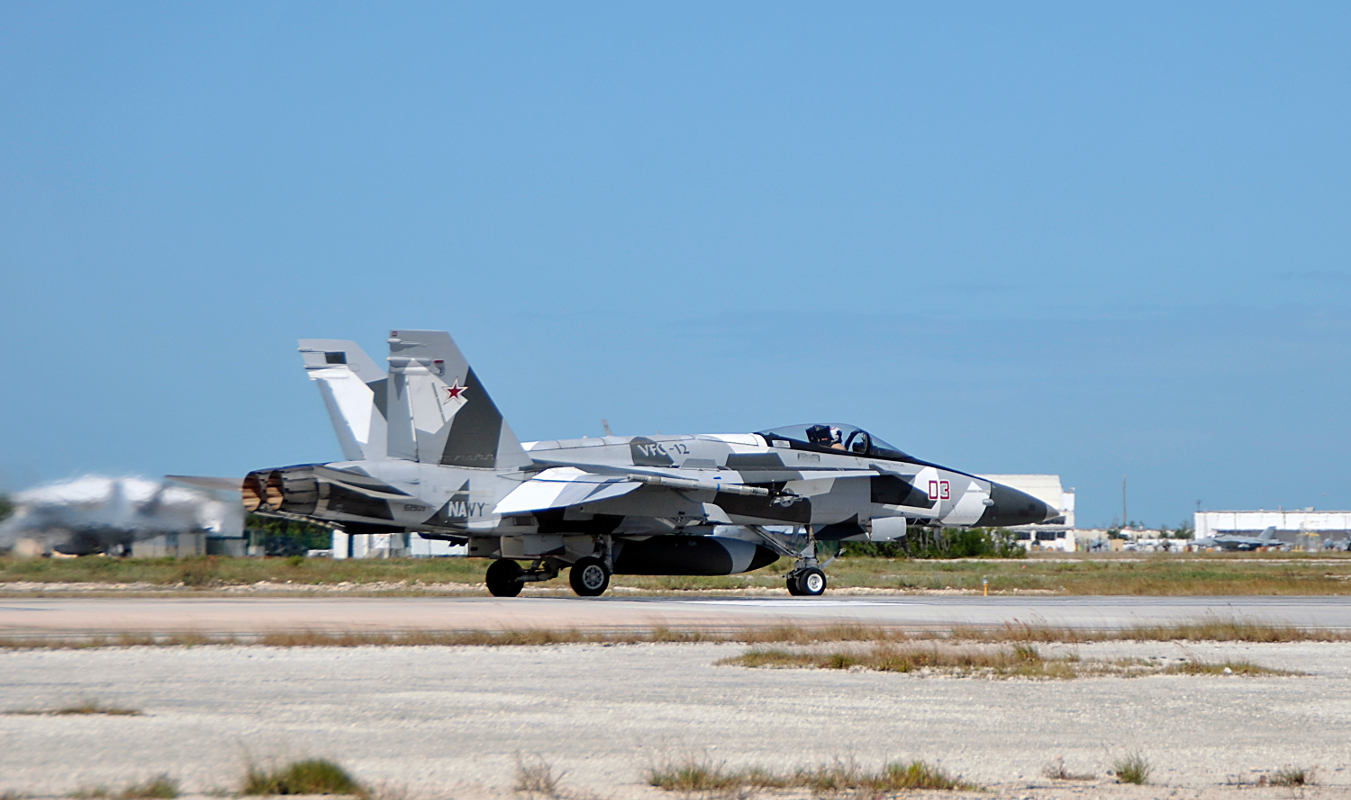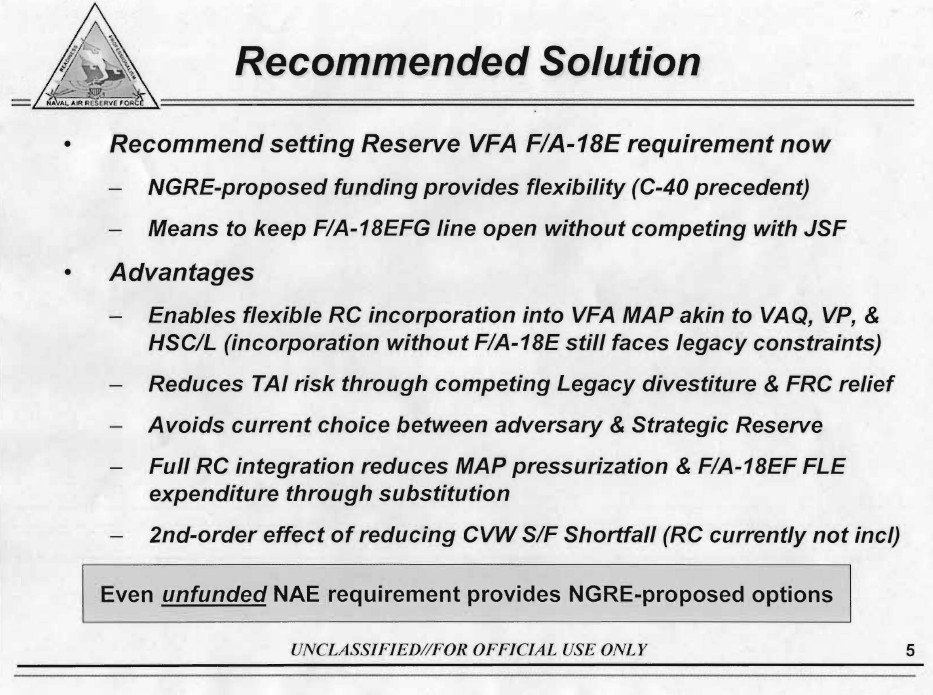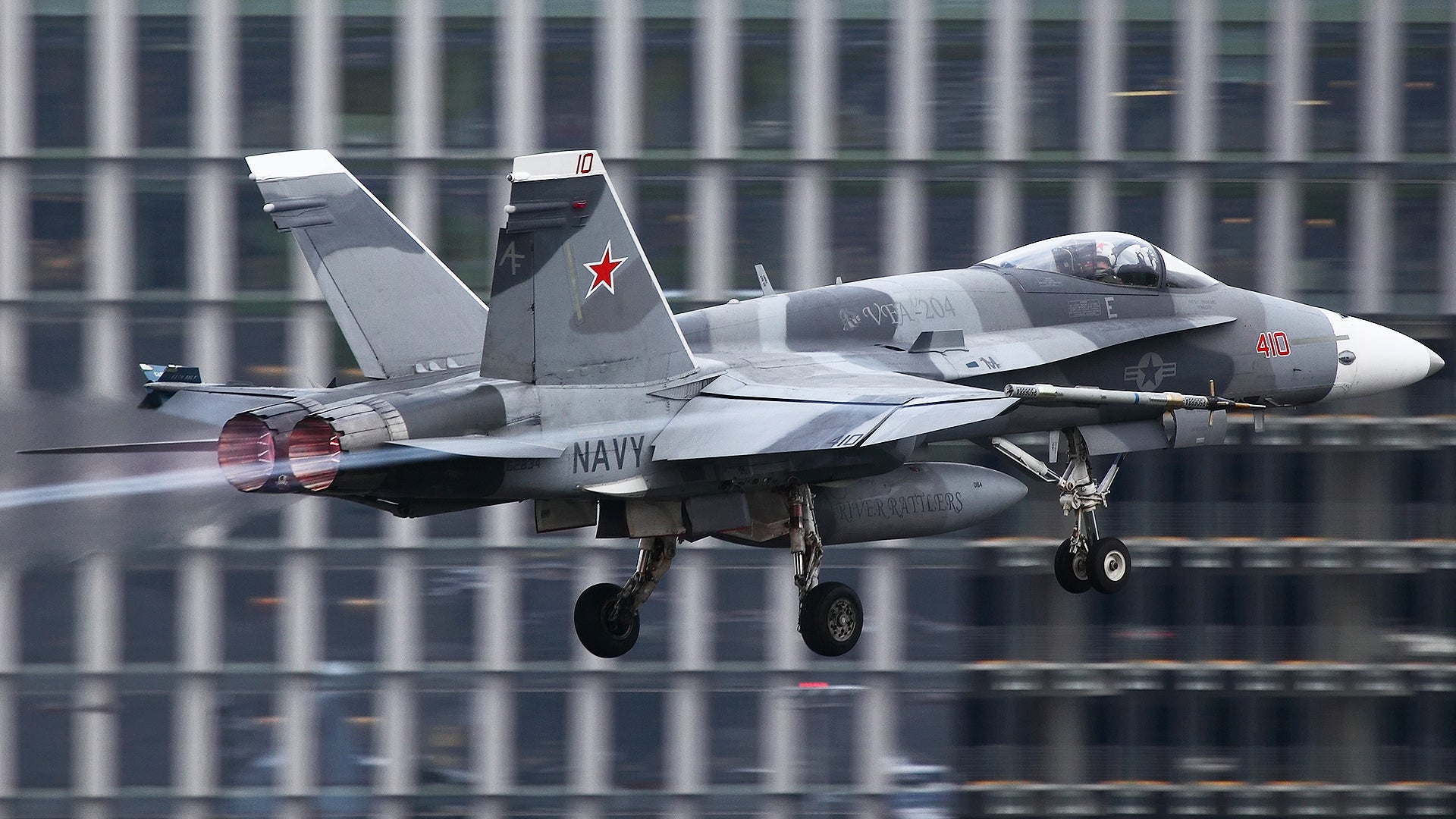The U.S. Navy has already announced plans buy more F/A-18E/F Super Hornets and upgrade others to a new, even more capable Block III configuration. Now Congress wants to know what the service plans to do about its oldest Hornets.
On June 26, 2017, the House Armed Services Committee released Chairman Mac Thornberry’s mark of the proposed Fiscal Year 2018 National Defense Authorization Bill. In it, the Texas Republican pointed out his committee’s concern about the “health and readiness” of the U.S. Navy Reserve’s fleet of more than 30 aging F/A-18A+ Hornets and included language that would require the service to brief legislators on a plan of action no later than Dec. 1, 2017.
Here are the bulk of the comments:
The committee remains concerned over the health and readiness of the Navy Reserve combat air fleet. The committee is aware that the Navy Reserve tactical aviation squadrons provide critical adversary support and strike fighter weapons training to Active Duty forces, and must maintain a high mobilization readiness level as the sole strategic reserve available to the U.S. Navy. The committee understands the Navy Reserve currently operates 33 legacy F/A-18A+ aircraft that are currently shared between 2 squadrons. The committee notes that with an average airframe age of 30 years and onboard systems that are no longer compatible with today’s Carrier Air Wing, these aircraft are increasingly less capable than the F/A-18E/F Super Hornets. The committee believes this could impact the ability of these two Navy Reserve squadrons in meeting requirements for advanced strike employment, as well as simulating current advanced threat aircraft. The committee also believes these legacy F/A-18A+ aircraft need to be recapitalized with next generation capability in order to provide realistic threat representative training for naval aviators and to maintain operational readiness that provides a relevant and deployable backstop to the Active Duty air wings.
Fighter Composite Squadron One Two (VFC-12), situated at Naval Air Station Oceana in Virginia, and Strike Fighter Squadron Two Zero Four (VFA-204), based at Naval Air Station Joint Reserve Base New Orleans in Louisiana, are the two units in question. The version of the Hornet they fly is among the oldest anywhere in the U.S. military, having rolled off the production line in the 1980s. The “+” nomenclature refers to aircraft that had a faster scanning and generally more powerful AN/APG-73 radar instead of the original AN/APG-65, which required a modified nose section. The planes also had other more minor improvements. That upgrade project began in 1992.

As noted in Thornberry’s mark, the primary job of both of these squadrons is to provide fleet adversary support various training exercises. Most of VFC-12’s and VFA-204’s aircraft even wear camouflage schemes similar to Russian fighter jets, along with small red stars and other markings, in order to complete their adversary look. VFA-204 has a secondary job of acting as a reserve force in times of crisis, proudly boasting in its annual histories, which the author previously obtained via the Freedom of Information Act, that it is “the Navy Reserve’s only remaining Strike Fighter Squadron available for contingency deployment.” This means VFA-204 has to head to the boat for carrier qualifications from time to time.
Based on those historical records, here’s a year in the life of the New Orleans-based squadron. In 2015, detachments attended a total of 11 different training events worthy of mention in the annual chronology, taking place in Florida, Louisiana, Nevada, and Virginia. During these deployments, the reserve aviators prepared active duty units for deployment overseas, acted as the adversaries during other air-to-air exercises, and helped Joint Tactical Air Controllers call in mock air strikes. In addition, the pilots also participated in a live-fire exercise to keep their own skills up, firing a total of seven missiles of unspecified types – almost undoubtedly a combination of AIM-9 Sidewinders and AIM-120 Advanced Medium-Range Air-to-Air Missiles, the aircraft’s main air-to-air weapons.

But as Thornberry explains in his mark, the F/A-18A+ in its present form simply cannot touch the performance of the Navy’s current Super Hornets. Without substantial improvements, the jets are even lacking in comparison to slightly newer legacy F/A-18C/D Hornets, which have, among other things, more powerful engines and improved avionics. This brings up questions about whether or not the jets are even still representative in training scenarios where they are supposed to mimic current and emergent threats.
And then there’s just the basic safety of the jets. In the past few years, the U.S. Marine Corps and the U.S. Navy Blue Angels have been literally flying their C/D models to pieces. The Marines, who have picked over aircraft in the Boneyard and at least one in a museum in desperate attempts to keep their legacy Hornet fleet ready, complain that roughly 70 percent of their Hornet force cannot fly at any given time. There is a real concern that without a substantial overhaul, the Navy Reserve planes may simply start falling out of the sky.

Of course, this isn’t a new issue, as both squadrons have been flying these jets for years now. A 2014 Naval Air Reserve Force briefing, which the author also obtained through FOIA, made it clear that without any plans to recapitalize the A+ model hornets, the squadrons would be at half strength by 2022 at the latest and their jets would be “all dead by 2028.” So, if the National Defense Authorization Bill passes into law with this language intact, it seems likely that the Navy would present at least three options to Congress to redress this issue.
The first and most obvious option would be to upgrade VFC-12 and VFA-204’s Hornets to the existing A++ configuration, which includes additional improvements that make the aircraft much closer in capability to the latest C/D models and which extends the aircraft’s service life out to 10,000 hours. According to the Navy’s own budget request for the 2018 fiscal year, the existing A++ jets have an average of more than 2,200 hours of service life remaining, while the older A+ versions generally have less than 300 hours left on their airframes.

This limited upgrade, combined with existing Service Life Extension Program (SLEP) plans, would probably make the most fiscal sense, especially for two squadrons that do not regularly see active duty or combat. It may even make sense to refocus VFA-204 on the training mission entirely, joining the ranks of a number of heavily tasked dedicated aggressor squadrons in both the U.S. Air Force and Navy. There is a good argument to be made that continuing to train for emergency deployments, whether embarked on carriers or situated at forward land bases, is a distraction from units’ core proficiency.
However, there is a lot of evidence to suggest the Navy Reserve will push hard to replace the jets entirely with F/A-18E Super Hornets. This has been their preferred recapitalization plan since at least 2014. With the passage of the Budget Control Act in 2011 and mandatory caps to defense spending as part of a process known as sequestration, the Navy continually deferred on the matter. Instead, the request for 24 all new jets at a cost of more than $1.3 billion repeatedly ended up in unfunded requirement “wish lists” for National Guard and Reserve Equipment (NGRE).

Since lawmakers and the Trump Administration are now both advocating for significant increases in defense spending, both Congress and the Navy may be more inclined to consider this option. The service has already announced its intention to buy dozens more Super Hornets, and F/A-18E’s would give these units the ability to represent emerging threats far better than their tired A+ Hornets. However, legislators may still not be convinced that spending more than a billion dollars to buy state-of-the-art jets for the reserve units is a good investment, especially considering the more pressing need of active duty squadrons still flying aging legacy C/D model Hornets.
The last option, of course, would be to shut down VFC-12 and VFA-204 entirely. Especially in light of the previous budget cuts, there had already been talk that this route might be the most fiscally responsible. However, the squadron leaderships in particular resisted this push, arguing that their adversary experience was irreplaceable. Without VFC-12 and VFA-204, and with the Air Force having trimmed its own similar specialized air-to-air aggressor units, the Pentagon would have to rely even more on private contractors to provide these services. The Navy Reserve would still retain two additional aggressor squadrons with the F-5N aircraft, along with the active duty Hornets and Vipers assigned to Topgun.

But Congress deciding to take this route is really very unlikely. Both reserve units are heavily tasked with adversary support missions, and if anything the Navy needs more capacity in this realm, not less. Even the Marine Corps is looking to expand itt F-5E fleet and add turboprop aircraft just to attempt to stay on top of its organic aggressor support needs.
There’s still no guarantee this provision will make it into the final National Defense Authorization Act. If it does, Thornberry and his committee will have to decide whether it makes sense to get the Navy Reserve Hornet squadrons new or just upgraded planes – or if it makes sense in the end to keep them around at all.
Contact the author: joe@thedrive.com
